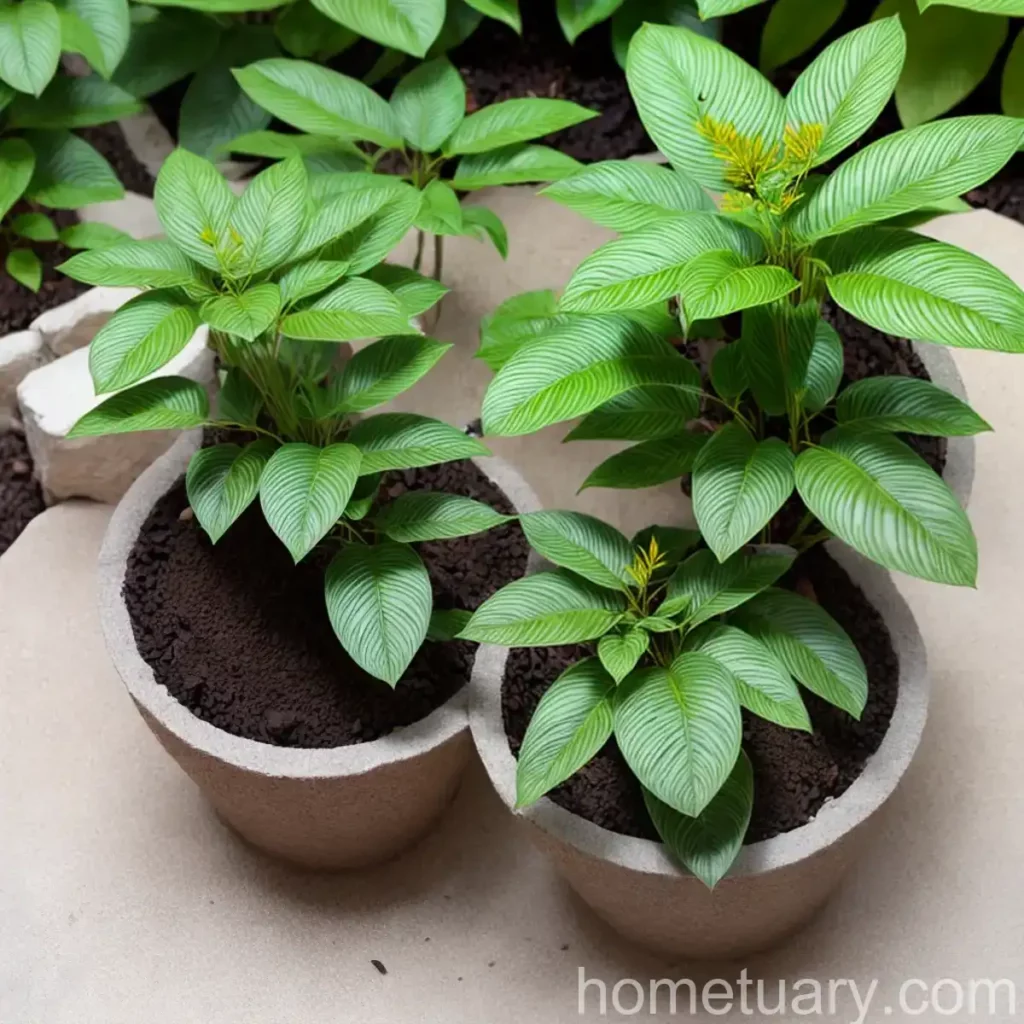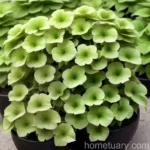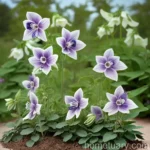Leatherwood (Dirca palustris): An Enigmatic Shrub
In the vast and diverse world of plants, there exist certain species that captivate with their intriguing characteristics, both in terms of their ecology and cultural significance. One such plant is the leatherwood (Dirca palustris), a unique and versatile shrub that holds a remarkable place in the botanical realm. In this comprehensive guide, we will delve deep into the various facets of the leatherwood plant, exploring its culture, uses, care requirements, and much more.
What is Plant: Leatherwood (Dirca palustris)
Leatherwood (Dirca palustris) Plant Description:
Leatherwood, scientifically known as Dirca palustris, is an understory shrub native to North America. This deciduous perennial plant belongs to the Thymelaeaceae family and is known for its significance in both ecological and cultural contexts.
The plant typically grows to a height of 1 to 2.5 meters, featuring slender, smooth, and often twisted stems. The leaves are simple, alternate, and broadly elliptic, with a leathery texture, which is the source of the plant’s common name. The flowers of the leatherwood shrub are small and light yellow, arranged in clusters that bloom in early spring before the leaves appear. Its fruit is a capsule containing several seeds, and the plant emits a distinctive, pleasant fragrance.
Dirca palustris is often found in rich, moist woodlands, particularly along stream banks and in damp thickets. It thrives in well-drained, acidic soils with ample organic matter. The presence of leatherwood in a natural setting is indicative of a healthy and diverse ecosystem.
Key Takeaways – Leatherwood (Dirca palustris)
Before delving into the intricate facets of leatherwood plant care and cultivation, let’s first explore some key takeaways about this captivating shrub:
- Its leathery-textured leaves give it the common name “leatherwood”.
- It is a native North American shrub, typically found in moist woodlands and understory environments.
- The plant blooms with small, fragrant, light yellow flowers in early spring.
- Leatherwood holds ecological significance as an indicator of biodiverse and healthy environments.
Now that we have gained a foundational understanding of leatherwood, let’s proceed to explore its diverse aspects in detail.
Culture
Water
Leatherwood plants have moderate water requirements. It is vital to establish a balanced watering routine to provide the plant with just the right amount of moisture. During the growing season, regular watering is essential. However, it is crucial to avoid waterlogging, as excessively wet soil can lead to root rot and other complications. In drier periods, supplemental watering can help maintain soil moisture levels, especially for younger plants.
Sunlight
In terms of sunlight, leatherwood thrives in partial shade to full shade conditions. It is well-suited for woodland gardens and shaded landscapes, where it can benefit from dappled sunlight filtering through the canopy. An ideal location for planting leatherwood would be under the shelter of taller trees or along the edges of wooded areas.
Soil
Leatherwood prefers moist, well-drained, and slightly acidic soils rich in organic matter. A humus-rich soil blend that retains moisture without becoming waterlogged is optimal for the plant’s growth and development. Incorporating organic compost and mulch can help improve soil texture and moisture retention, fostering a conducive environment for leatherwood to thrive.
Fertilizer
When it comes to fertilization, leatherwood plants have minimal fertilizer requirements. However, applying a balanced, slow-release fertilizer specifically formulated for acid-loving plants in the early spring can provide a gentle nutrient boost to support healthy growth. It is important to avoid over-fertilization, as leatherwood is sensitive to excessive nutrient levels.
Uses
Landscape Ornamental Use
The striking features of leatherwood, including its leathery foliage, delicate yellow flowers, and unique growth habit, make it an excellent choice for ornamental landscapes. Its ability to thrive in shaded environments enhances its appeal as a woodland garden specimen or understory planting. Leatherwood plants can be used as focal points in shaded gardens, naturalistic plantings, or woodland edge landscapes, adding a touch of elegance and natural charm to the surroundings.
Ecological Significance
Apart from its ornamental utility, leatherwood holds ecological significance as a native North American shrub. It plays a role in promoting biodiversity and habitat diversity, serving as an indicator of healthy woodland ecosystems. Its presence contributes to the overall functionality and resilience of forested environments, supporting a range of wildlife and beneficial organisms.
Medicinal and Cultural Uses
In certain traditional practices, various parts of the leatherwood plant have been utilized for medicinal purposes. The bark of the shrub contains compounds that have been historically employed to address certain ailments. Additionally, the plant holds cultural and symbolic significance in some indigenous traditions, representing resilience, adaptability, and the interconnectedness of nature.
Pruning
Pruning Techniques
Pruning leatherwood plants should be approached with care and precision. Regular maintenance pruning can help shape the shrub, remove dead or damaged branches, and promote healthy growth. Pruning is best carried out in the early spring before new growth emerges. Care should be taken to maintain the natural form of the plant while addressing any specific pruning requirements.
Pruning Frequency
As a slow-growing shrub, leatherwood generally requires minimal pruning. It is advisable to assess the shrub’s growth annually and perform any necessary corrective or maintenance pruning at the appropriate time. Over-pruning should be avoided, as leatherwood benefits from its natural, graceful form.
Propagation
Propagation Methods
Leatherwood can be propagated through various methods, including:
- Seed Propagation: Collecting and germinating seeds from mature leatherwood plants.
- Softwood Cuttings: Taking softwood cuttings from actively growing shoots in the early summer and propagating them in a controlled environment.
- Layering: Encouraging new roots to develop on a flexible stem that is still attached to the parent plant, before separating it to form a new individual.
Each propagation method requires careful attention to timing, environmental conditions, and proper care to ensure successful establishment and growth of new leatherwood plants.
Container Popularity
While leatherwood is primarily cultivated in naturalized woodland settings and native plant gardens, it can also be grown in containers. Its adaptability to shaded environments and moderate size make it suitable for container cultivation in shaded patios, balconies, and outdoor living spaces. When grown in containers, it is important to select a potting mix that replicates the plant’s preferred soil conditions and to provide adequate moisture and shade.
Container Common Diseases
When grown in containers, leatherwood is susceptible to certain diseases and issues that may affect its growth and vitality. Common diseases that may affect leatherwood in containers include:
- Root Rot: Overly saturated or poorly-drained potting mix can lead to root rot, impacting the plant’s ability to absorb nutrients and water.
- Fungal Infections: High humidity levels in potting environments can create conditions conducive to fungal infections, leading to leaf spots or fungal diseases.
Proper container selection, well-draining potting mix, and balanced watering practices can help mitigate the risk of these diseases and promote the overall health of leatherwood plants in containers.
Common Pests
While leatherwood plants are relatively resistant to pests, they may occasionally face attacks from certain insects and pests. Common pests that may affect leatherwood include:
- Aphids: These small, sap-sucking insects can cluster on the undersides of leaves, impacting the plant’s overall health.
- Spider Mites: Spider mites can infest leatherwood plants, causing stippling or discoloration of leaves and affecting their vitality.
Implementing integrated pest management practices, such as regular monitoring, maintaining plant health, and employing natural predators, can help manage pest populations and minimize their impact on leatherwood plants.
Botanist’s Tips
From a botanist’s perspective, the remarkable characteristics and ecological significance of leatherwood plants offer valuable insights into the interconnectedness of plant species within their native environments. Here are some tips from a botanist’s point of view:
- Leatherwood serves as an indicator of ecological health and diversity, reflecting the intricate relationships present in natural ecosystems.
- Understanding the natural history and habitat preferences of leatherwood can provide valuable insights into conserving and restoring diverse woodland environments.
- Studying the genetic diversity and adaptations of leatherwood populations can contribute to broader knowledge of plant evolution and adaptation in varying ecological niches.
Fun Facts
Did You Know?
- The scientific name Dirca palustris derives from “Dirca,” a word of unknown origin used by Pliny for a plant believed to be a kind of leather, and “palustris,” Latin for “of swamps or marshes,” referencing the plant’s favored habitat.
- Leatherwood’s tough and flexible bark has historically been used to make durable cords and even as a substitute for leather, demonstrating the plant’s versatile characteristics.
- In certain ecosystems, leatherwood serves as a host plant for specific butterfly species, highlighting its role in supporting diverse wildlife populations.
Links to External Resources
As we conclude this in-depth exploration of leatherwood plants, here are some external resources for further reading and research:
- North Carolina State University Extension: Leatherwood
- USDA Plants Database: Dirca palustris
- Missouri Botanical Garden: Dirca palustris
In this comprehensive guide, we have covered an array of topics related to the leatherwood plant (Dirca palustris), ranging from its culture and uses to its ecological significance and propagation methods. Whether you are a gardening enthusiast, a nature lover, or a botany aficionado, the enigmatic charm of leatherwood is sure to captivate your curiosity and appreciation for the natural world. As we continue to explore the rich tapestry of plant diversity, the leatherwood plant stands as a testament to the wonders of North American flora and the significance of conserving and celebrating its unique botanical heritage.















